-
EXECUTIVE SUMMARY 17
-
MARKET ATTRACTIVENESS ANALYSIS 18
- GLOBAL MEN’S HAIR COLOR MARKET, BY PRODUCT TYPE 19
- GLOBAL MEN’S HAIR COLOR MARKET, BY CATEGORY 20
- GLOBAL MEN’S HAIR COLOR MARKET, BY FORM 21
- GLOBAL MEN’S HAIR COLOR MARKET, BY END USER 22
- GLOBAL MEN’S HAIR COLOR MARKET, BY DISTRIBUTION CHANNEL 23
- GLOBAL MEN’S HAIR COLOR MARKET, BY REGION 24
-
MARKET INTRODUCTION 25
-
DEFINITION 25
-
SCOPE OF THE STUDY 25
-
RESEARCH OBJECTIVE 25
-
MARKET STRUCTURE 26
-
KEY BUYING CRITERIA 27
-
RESEARCH METHODOLOGY 28
-
RESEARCH PROCESS 28
-
PRIMARY RESEARCH 29
-
SECONDARY RESEARCH 30
-
MARKET SIZE ESTIMATION 31
-
FORECAST MODEL 32
-
LIST OF ASSUMPTIONS 33
-
MARKET DYNAMICS 34
-
INTRODUCTION 34
-
DRIVERS 35
- GROWING PREFERENCE OF MEN’S GROOMING 35
- INCREASING PROFESSIONAL SALON SERVICES FOR MEN 35
- INCREASING SALES THROUGH ORGANIZED RETAIL CHANNELS 35
- DRIVERS IMPACT ANALYSIS 36
-
RESTRAINTS 36
- SIDE-EFFECTS OF HARMFUL CHEMICALS 36
- RESTRAINTS IMPACT ANALYSIS 37
-
OPPORTUNITIES 37
- NEW PRODUCT LAUNCHES AND INCREASING DEMAND FOR ORGANIC PRODUCTS 37
- INFLUENCE OF SOCIAL MEDIA AND INNOVATIVE MARKETING STRATEGIES 37
-
CHALLENGES 38
- TIGHTENING REGULATIONS ACROSS THE GLOBE 38
-
MARKET FACTOR ANALYSIS 39
-
VALUE CHAIN ANALYSIS 39
- RAW MATERIAL PROCUREMENT 40
- PROCESSING 40
- PACKAGING 40
-
SUPPLY CHAIN ANALYSIS 41
-
PORTER’S FIVE FORCES MODEL 42
- THREAT OF NEW ENTRANTS 42
- BARGAINING POWER OF SUPPLIERS 43
- THREAT OF SUBSTITUTES 43
- BARGAINING POWER OF BUYERS 43
- INTENSITY OF RIVALRY 43
-
GLOBAL MEN’S HAIR COLOR MARKET, BY PRODUCT TYPE 44
-
OVERVIEW 44
- GLOBAL MEN’S HAIR COLOR MARKET ESTIMATES & FORECAST, BY PRODUCT TYPE, 2023-2032 45
-
PERMANENT AND SEMI-PERMANENT HAIR COLOR 45
- PERMANENT AND SEMI-PERMANENT HAIR COLOR: MARKET ESTIMATES & FORECAST, BY REGION, 2023-2032 45
-
TEMPORARY HAIR COLOR 46
- TEMPORARY HAIR COLOR: MARKET ESTIMATES & FORECAST, BY REGION, 2023-2032 46
-
ROOT TOUCH-UP 46
- ROOT TOUCH-UP: MARKET ESTIMATES & FORECAST, BY REGION, 2023-2032 46
-
OTHERS 47
- OTHERS: MARKET ESTIMATES & FORECAST, BY REGION, 2023-2032 47
-
GLOBAL MEN’S HAIR COLOR MARKET, BY CATEGORY 48
-
OVERVIEW 48
- GLOBAL MEN’S HAIR COLOR MARKET ESTIMATES & FORECAST, BY CATEGORY, 2023-2032 49
-
CONVENTIONAL 49
- CONVENTIONAL: MARKET ESTIMATES & FORECAST, BY REGION, 2023-2032 49
-
ORGANIC 50
- ORGANIC: MARKET ESTIMATES & FORECAST, BY REGION, 2023-2032 50
-
GLOBAL MEN’S HAIR COLOR MARKET, BY FORM 51
-
OVERVIEW 51
- GLOBAL MEN’S HAIR COLOR MARKET ESTIMATES & FORECAST, BY FORM, 2023-2032 52
-
POWDER 52
- POWDER: MARKET ESTIMATES & FORECAST, BY REGION, 2023-2032 52
-
CREAM & GEL 53
- CREAM & GEL: MARKET ESTIMATES & FORECAST, BY REGION, 2023-2032 53
-
OTHERS 53
- OTHERS: MARKET ESTIMATES & FORECAST, BY REGION, 2023-2032 53
-
GLOBAL MEN’S HAIR COLOR MARKET, BY END USER 54
-
OVERVIEW 54
- GLOBAL MEN’S HAIR COLOR MARKET ESTIMATES & FORECAST, BY END USER, 2023-2032 55
-
HOUSEHOLD 55
- HOUSEHOLD: MARKET ESTIMATES & FORECAST, BY REGION, 2023-2032 55
-
COMMERCIAL 56
- COMMERCIAL: MARKET ESTIMATES & FORECAST, BY REGION, 2023-2032 56
-
GLOBAL MEN’S HAIR COLOR MARKET, BY DISTRIBUTION CHANNEL 57
-
OVERVIEW 57
- GLOBAL MEN’S HAIR COLOR MARKET ESTIMATES & FORECAST, BY DISTRIBUTION CHANNEL, 2023-2032 58
-
STORE-BASED 58
- STORE-BASED: MARKET ESTIMATES & FORECAST, BY REGION, 2023-2032 58
-
NON-STORE-BASED 59
- NON-STORE-BASED: MARKET ESTIMATES & FORECAST, BY REGION, 2023-2032 59
-
GLOBAL MEN’S HAIR COLOR MARKET, BY REGION 60
-
OVERVIEW 60
-
NORTH AMERICA 62
- US 64
- CANADA 66
- MEXICO 67
-
EUROPE 69
- UK 71
- GERMANY 73
- FRANCE 74
- ITALY 76
- SPAIN 77
- REST OF EUROPE 79
-
ASIA-PACIFIC 81
- CHINA 83
- INDIA 85
- JAPAN 86
- AUSTRALIA & NEW ZEALAND 88
- REST OF ASIA-PACIFIC 89
-
REST OF THE WORLD 91
- SOUTH AMERICA 93
- MIDDLE EAST 95
- AFRICA 96
-
COMPETITIVE LANDSCAPE 98
-
INTRODUCTION 98
-
MARKET STRATEGY ANALYSIS 98
-
COMPETITIVE BENCHMARKING 99
-
KEY DEVELOPMENTS & GROWTH STRATEGIES 100
- INVESTMENT 100
- EXPANSION 100
- DISINVESTMENT 100
- PRODUCT LAUNCH 101
-
COMPANY PROFILES 102
-
REVLON, INC. 102
- COMPANY OVERVIEW 102
- FINANCIAL OVERVIEW 103
- PRODUCTS OFFERED 103
- KEY DEVELOPMENTS 104
- SWOT ANALYSIS 104
- KEY STRATEGIES 104
-
L’ORÉAL S.A. 105
- COMPANY OVERVIEW 105
- FINANCIAL OVERVIEW 106
- PRODUCTS OFFERED 106
- KEY DEVELOPMENTS 107
- SWOT ANALYSIS 107
- KEY STRATEGIES 107
-
COTY, INC. 108
- COMPANY OVERVIEW 108
- FINANCIAL OVERVIEW 109
- PRODUCTS OFFERED 109
- KEY DEVELOPMENTS 110
- SWOT ANALYSIS 110
- KEY STRATEGIES 110
-
COMBE INCORPORATED 111
- COMPANY OVERVIEW 111
- FINANCIAL OVERVIEW 111
- PRODUCTS OFFERED 111
- KEY DEVELOPMENTS 111
- SWOT ANALYSIS 112
- KEY STRATEGIES 112
-
INDUS VALLEY 113
- COMPANY OVERVIEW 113
- FINANCIAL OVERVIEW 113
- PRODUCTS OFFERED 113
- KEY DEVELOPMENTS 113
- KEY STRATEGIES 113
-
HOYU CO., LTD 114
- COMPANY OVERVIEW 114
- FINANCIAL OVERVIEW 114
- PRODUCTS OFFERED 115
- KEY DEVELOPMENTS 115
- SWOT ANALYSIS 116
- KEY STRATEGIES 116
-
COVER YOUR GRAY 117
- COMPANY OVERVIEW 117
- FINANCIAL OVERVIEW 117
- PRODUCTS OFFERED 117
- KEY DEVELOPMENTS 117
- KEY STRATEGIES 117
-
JOHN PAUL MITCHELL SYSTEMS 118
- COMPANY OVERVIEW 118
- FINANCIAL OVERVIEW 118
- PRODUCTS OFFERED 118
- KEY DEVELOPMENTS 118
- KEY STRATEGIES 118
-
NATULIQUE APS 119
- COMPANY OVERVIEW 119
- FINANCIAL OVERVIEW 119
- PRODUCTS OFFERED 119
- KEY DEVELOPMENTS 119
- KEY STRATEGIES 119
-
KAO CORPORATION 120
- COMPANY OVERVIEW 120
- FINANCIAL OVERVIEW 120
- PRODUCTS OFFERED 121
- KEY DEVELOPMENTS 121
- KEY STRATEGIES 121
-
REFERENCES 122
-
-
LIST OF TABLES
-
PRIMARY INTERVIEWS 29
-
LIST OF ASSUMPTIONS 33
-
GLOBAL MEN’S HAIR COLOR MARKET ESTIMATES & FORECAST, BY PRODUCT TYPE, 2023-2032 (USD MILLION) 45
-
PERMANENT AND SEMI-PERMANENT HAIR COLOR: MARKET ESTIMATES & FORECAST, BY REGION, 2023-2032 (USD MILLION) 45
-
TEMPORARY HAIR COLOR: MARKET ESTIMATES & FORECAST, BY REGION, 2023-2032 (USD MILLION) 46
-
ROOT TOUCH-UP: MARKET ESTIMATES & FORECAST, BY REGION, 2023-2032 (USD MILLION) 46
-
OTHERS: MARKET ESTIMATES & FORECAST, BY REGION, 2023-2032 (USD MILLION) 47
-
GLOBAL MEN’S HAIR COLOR MARKET ESTIMATES & FORECAST, BY CATEGORY, 2023-2032 (USD MILLION) 49
-
CONVENTIONAL: MARKET ESTIMATES & FORECAST, BY REGION, 2023-2032 (USD MILLION) 49
-
ORGANIC: MARKET ESTIMATES & FORECAST, BY REGION, 2023-2032 (USD MILLION) 50
-
GLOBAL MEN’S HAIR COLOR MARKET ESTIMATES & FORECAST, BY FORM, 2023-2032 (USD MILLION) 52
-
POWDER: MARKET ESTIMATES & FORECAST, BY REGION, 2023-2032 (USD MILLION) 52
-
CREAM & GEL: MARKET ESTIMATES & FORECAST, BY REGION, 2023-2032 (USD MILLION) 53
-
OTHERS: MARKET ESTIMATES & FORECAST, BY REGION, 2023-2032 (USD MILLION) 53
-
GLOBAL MEN’S HAIR COLOR MARKET ESTIMATES & FORECAST, BY END USER, 2023-2032 (USD MILLION) 55
-
HOUSEHOLD: MARKET ESTIMATES & FORECAST, BY REGION, 2023-2032 (USD MILLION) 55
-
COMMERCIAL: MARKET ESTIMATES & FORECAST, BY REGION, 2023-2032 (USD MILLION) 56
-
GLOBAL MEN’S HAIR COLOR MARKET ESTIMATES & FORECAST, BY DISTRIBUTION CHANNEL, 2023-2032 (USD MILLION) 58
-
STORE-BASED: MARKET ESTIMATES & FORECAST, BY REGION, 2023-2032 (USD MILLION) 58
-
NON-STORE-BASED: MARKET ESTIMATES & FORECAST, BY REGION, 2023-2032 (USD MILLION) 59
-
GLOBAL MEN’S HAIR COLOR MARKET ESTIMATES & FORECAST, BY REGION, 2023-2032 (USD MILLION) 61
-
NORTH AMERICA: MARKET ESTIMATES & FORECAST, BY COUNTRY, 2023-2032 (USD MILLION) 62
-
NORTH AMERICA: MEN’S HAIR COLOR MARKET, BY PRODUCT TYPE, 2023-2032 (USD MILLION) 63
-
NORTH AMERICA: MEN’S HAIR COLOR MARKET, BY CATEGORY, 2023-2032 (USD MILLION) 63
-
NORTH AMERICA: MEN’S HAIR COLOR MARKET, BY FORM, 2023-2032 (USD MILLION) 63
-
NORTH AMERICA: MEN’S HAIR COLOR MARKET, BY END USER, 2023-2032 (USD MILLION) 63
-
NORTH AMERICA: MEN’S HAIR COLOR MARKET, BY DISTRIBUTION CHANNEL, 2023-2032 (USD MILLION) 64
-
US: MEN’S HAIR COLOR MARKET, BY PRODUCT TYPE, 2023-2032 (USD MILLION) 64
-
US: MEN’S HAIR COLOR MARKET, BY CATEGORY, 2023-2032 (USD MILLION) 64
-
US: MEN’S HAIR COLOR MARKET, BY FORM, 2023-2032 (USD MILLION) 65
-
US: MEN’S HAIR COLOR MARKET, BY END USER, 2023-2032 (USD MILLION) 65
-
US: MEN’S HAIR COLOR MARKET, BY DISTRIBUTION CHANNEL, 2023-2032 (USD MILLION) 65
-
CANADA: MEN’S HAIR COLOR MARKET, BY PRODUCT TYPE, 2023-2032 (USD MILLION) 66
-
CANADA: MEN’S HAIR COLOR MARKET, BY CATEGORY, 2023-2032 (USD MILLION) 66
-
CANADA: MEN’S HAIR COLOR MARKET, BY FORM, 2023-2032 (USD MILLION) 66
-
CANADA: MEN’S HAIR COLOR MARKET, BY END USER, 2023-2032 (USD MILLION) 66
-
CANADA: MEN’S HAIR COLOR MARKET, BY DISTRIBUTION CHANNEL, 2023-2032 (USD MILLION) 67
-
MEXICO: MEN’S HAIR COLOR MARKET, BY PRODUCT TYPE, 2023-2032 (USD MILLION) 67
-
MEXICO: MEN’S HAIR COLOR MARKET, BY CATEGORY, 2023-2032 (USD MILLION) 67
-
MEXICO: MEN’S HAIR COLOR MARKET, BY FORM, 2023-2032 (USD MILLION) 68
-
MEXICO: MEN’S HAIR COLOR MARKET, BY END USER, 2023-2032 (USD MILLION) 68
-
MEXICO: MEN’S HAIR COLOR MARKET, BY DISTRIBUTION CHANNEL, 2023-2032 (USD MILLION) 68
-
EUROPE: MARKET ESTIMATES & FORECAST, BY COUNTRY, 2023-2032 (USD MILLION) 69
-
EUROPE: MEN’S HAIR COLOR MARKET, BY PRODUCT TYPE, 2023-2032 (USD MILLION) 70
-
EUROPE: MEN’S HAIR COLOR MARKET, BY CATEGORY, 2023-2032 (USD MILLION) 70
-
EUROPE: MEN’S HAIR COLOR MARKET, BY FORM, 2023-2032 (USD MILLION) 70
-
EUROPE: MEN’S HAIR COLOR MARKET, BY END USER, 2023-2032 (USD MILLION) 70
-
EUROPE: MEN’S HAIR COLOR MARKET, BY DISTRIBUTION CHANNEL, 2023-2032 (USD MILLION) 71
-
UK: MEN’S HAIR COLOR MARKET, BY PRODUCT TYPE, 2023-2032 (USD MILLION) 71
-
UK: MEN’S HAIR COLOR MARKET, BY CATEGORY, 2023-2032 (USD MILLION) 71
-
UK: MEN’S HAIR COLOR MARKET, BY FORM, 2023-2032 (USD MILLION) 72
-
UK: MEN’S HAIR COLOR MARKET, BY END USER, 2023-2032 (USD MILLION) 72
-
UK: MEN’S HAIR COLOR MARKET, BY DISTRIBUTION CHANNEL, 2023-2032 (USD MILLION) 72
-
GERMANY: MEN’S HAIR COLOR MARKET, BY PRODUCT TYPE, 2023-2032 (USD MILLION) 73
-
GERMANY: MEN’S HAIR COLOR MARKET, BY CATEGORY, 2023-2032 (USD MILLION) 73
-
GERMANY: MEN’S HAIR COLOR MARKET, BY FORM, 2023-2032 (USD MILLION) 73
-
GERMANY: MEN’S HAIR COLOR MARKET, BY END USER, 2023-2032 (USD MILLION) 73
-
GERMANY: MEN’S HAIR COLOR MARKET, BY DISTRIBUTION CHANNEL, 2023-2032 (USD MILLION) 74
-
FRANCE: MEN’S HAIR COLOR MARKET, BY PRODUCT TYPE, 2023-2032 (USD MILLION) 74
-
FRANCE: MEN’S HAIR COLOR MARKET, BY CATEGORY, 2023-2032 (USD MILLION) 74
-
FRANCE: MEN’S HAIR COLOR MARKET, BY FORM, 2023-2032 (USD MILLION) 75
-
FRANCE: MEN’S HAIR COLOR MARKET, BY END USER, 2023-2032 (USD MILLION) 75
-
FRANCE: MEN’S HAIR COLOR MARKET, BY DISTRIBUTION CHANNEL, 2023-2032 (USD MILLION) 75
-
ITALY: MEN’S HAIR COLOR MARKET, BY PRODUCT TYPE, 2023-2032 (USD MILLION) 76
-
ITALY: MEN’S HAIR COLOR MARKET, BY CATEGORY, 2023-2032 (USD MILLION) 76
-
ITALY: MEN’S HAIR COLOR MARKET, BY FORM, 2023-2032 (USD MILLION) 76
-
ITALY: MEN’S HAIR COLOR MARKET, BY END USER, 2023-2032 (USD MILLION) 76
-
ITALY: MEN’S HAIR COLOR MARKET, BY DISTRIBUTION CHANNEL, 2023-2032 (USD MILLION) 77
-
SPAIN: MEN’S HAIR COLOR MARKET, BY PRODUCT TYPE, 2023-2032 (USD MILLION) 77
-
SPAIN: MEN’S HAIR COLOR MARKET, BY CATEGORY, 2023-2032 (USD MILLION) 77
-
SPAIN: MEN’S HAIR COLOR MARKET, BY FORM, 2023-2032 (USD MILLION) 78
-
SPAIN: MEN’S HAIR COLOR MARKET, BY END USER, 2023-2032 (USD MILLION) 78
-
SPAIN: MEN’S HAIR COLOR MARKET, BY DISTRIBUTION CHANNEL, 2023-2032 (USD MILLION) 78
-
REST OF EUROPE: MEN’S HAIR COLOR MARKET, BY PRODUCT TYPE, 2023-2032 (USD MILLION) 79
-
REST OF EUROPE: MEN’S HAIR COLOR MARKET, BY CATEGORY, 2023-2032 (USD MILLION) 79
-
REST OF EUROPE: MEN’S HAIR COLOR MARKET, BY FORM, 2023-2032 (USD MILLION) 79
-
REST OF EUROPE: MEN’S HAIR COLOR MARKET, BY END USER, 2023-2032 (USD MILLION) 80
-
REST OF EUROPE: MEN’S HAIR COLOR MARKET, BY DISTRIBUTION CHANNEL, 2023-2032 (USD MILLION) 80
-
ASIA-PACIFIC: MARKET ESTIMATES & FORECAST, BY COUNTRY, 2023-2032 (USD MILLION) 81
-
ASIA-PACIFIC: MEN’S HAIR COLOR MARKET, BY PRODUCT TYPE, 2023-2032 (USD MILLION) 82
-
ASIA-PACIFIC: MEN’S HAIR COLOR MARKET, BY CATEGORY, 2023-2032 (USD MILLION) 82
-
ASIA-PACIFIC: MEN’S HAIR COLOR MARKET, BY FORM, 2023-2032 (USD MILLION) 82
-
ASIA-PACIFIC: MEN’S HAIR COLOR MARKET, BY END USER, 2023-2032 (USD MILLION) 82
-
ASIA-PACIFIC: MEN’S HAIR COLOR MARKET, BY DISTRIBUTION CHANNEL, 2023-2032 (USD MILLION) 83
-
CHINA: MEN’S HAIR COLOR MARKET, BY PRODUCT TYPE, 2023-2032 (USD MILLION) 83
-
CHINA: MEN’S HAIR COLOR MARKET, BY CATEGORY, 2023-2032 (USD MILLION) 83
-
CHINA: MEN’S HAIR COLOR MARKET, BY FORM, 2023-2032 (USD MILLION) 84
-
CHINA: MEN’S HAIR COLOR MARKET, BY END USER, 2023-2032 (USD MILLION) 84
-
CHINA: MEN’S HAIR COLOR MARKET, BY DISTRIBUTION CHANNEL, 2023-2032 (USD MILLION) 84
-
INDIA: MEN’S HAIR COLOR MARKET, BY PRODUCT TYPE, 2023-2032 (USD MILLION) 85
-
INDIA: MEN’S HAIR COLOR MARKET, BY CATEGORY, 2023-2032 (USD MILLION) 85
-
INDIA: MEN’S HAIR COLOR MARKET, BY FORM, 2023-2032 (USD MILLION) 85
-
INDIA: MEN’S HAIR COLOR MARKET, BY END USER, 2023-2032 (USD MILLION) 85
-
INDIA: MEN’S HAIR COLOR MARKET, BY DISTRIBUTION CHANNEL, 2023-2032 (USD MILLION) 86
-
JAPAN: MEN’S HAIR COLOR MARKET, BY PRODUCT TYPE, 2023-2032 (USD MILLION) 86
-
JAPAN: MEN’S HAIR COLOR MARKET, BY CATEGORY, 2023-2032 (USD MILLION) 86
-
JAPAN: MEN’S HAIR COLOR MARKET, BY FORM, 2023-2032 (USD MILLION) 87
-
JAPAN: MEN’S HAIR COLOR MARKET, BY END USER, 2023-2032 (USD MILLION) 87
-
JAPAN: MEN’S HAIR COLOR MARKET, BY DISTRIBUTION CHANNEL, 2023-2032 (USD MILLION) 87
-
AUSTRALIA & NEW ZEALAND: MEN’S HAIR COLOR MARKET, BY PRODUCT TYPE, 2023-2032 (USD MILLION) 88
-
AUSTRALIA & NEW ZEALAND: MEN’S HAIR COLOR MARKET, BY CATEGORY, 2023-2032 (USD MILLION) 88
-
AUSTRALIA & NEW ZEALAND: MEN’S HAIR COLOR MARKET, BY FORM, 2023-2032 (USD MILLION) 88
-
AUSTRALIA & NEW ZEALAND: MEN’S HAIR COLOR MARKET, BY END USER, 2023-2032 (USD MILLION) 88
-
AUSTRALIA & NEW ZEALAND: MEN’S HAIR COLOR MARKET, BY DISTRIBUTION CHANNEL, 2023-2032 (USD MILLION) 89
-
REST OF ASIA-PACIFIC: MEN’S HAIR COLOR MARKET, BY PRODUCT TYPE, 2023-2032 (USD MILLION) 89
-
REST OF ASIA-PACIFIC: MEN’S HAIR COLOR MARKET, BY CATEGORY, 2023-2032 (USD MILLION) 89
-
REST OF ASIA-PACIFIC: MEN’S HAIR COLOR MARKET, BY FORM, 2023-2032 (USD MILLION) 90
-
REST OF ASIA-PACIFIC: MEN’S HAIR COLOR MARKET, BY END USER, 2023-2032 (USD MILLION) 90
-
REST OF ASIA-PACIFIC: MEN’S HAIR COLOR MARKET, BY DISTRIBUTION CHANNEL, 2023-2032 (USD MILLION) 90
-
REST OF THE WORLD: MARKET ESTIMATES & FORECAST, BY REGION, 2023-2032 (USD MILLION) 91
-
REST OF THE WORLD: MEN’S HAIR COLOR MARKET, BY PRODUCT TYPE, 2023-2032 (USD MILLION) 92
-
REST OF THE WORLD: MEN’S HAIR COLOR MARKET, BY CATEGORY, 2023-2032 (USD MILLION) 92
-
REST OF THE WORLD: MEN’S HAIR COLOR MARKET, BY FORM, 2023-2032 (USD MILLION) 92
-
REST OF THE WORLD: MEN’S HAIR COLOR MARKET, BY END USER, 2023-2032 (USD MILLION) 92
-
REST OF THE WORLD: MEN’S HAIR COLOR MARKET, BY DISTRIBUTION CHANNEL, 2023-2032 (USD MILLION) 93
-
SOUTH AMERICA: MEN’S HAIR COLOR MARKET, BY PRODUCT TYPE, 2023-2032 (USD MILLION) 93
-
SOUTH AMERICA: MEN’S HAIR COLOR MARKET, BY CATEGORY, 2023-2032 (USD MILLION) 93
-
SOUTH AMERICA: MEN’S HAIR COLOR MARKET, BY FORM, 2023-2032 (USD MILLION) 94
-
SOUTH AMERICA: MEN’S HAIR COLOR MARKET, BY END USER, 2023-2032 (USD MILLION) 94
-
SOUTH AMERICA: MEN’S HAIR COLOR MARKET, BY DISTRIBUTION CHANNEL, 2023-2032 (USD MILLION) 94
-
MIDDLE EAST: MEN’S HAIR COLOR MARKET, BY PRODUCT TYPE, 2023-2032 (USD MILLION) 95
-
MIDDLE EAST: MEN’S HAIR COLOR MARKET, BY CATEGORY, 2023-2032 (USD MILLION) 95
-
MIDDLE EAST: MEN’S HAIR COLOR MARKET, BY FORM, 2023-2032 (USD MILLION) 95
-
MIDDLE EAST: MEN’S HAIR COLOR MARKET, BY END USER, 2023-2032 (USD MILLION) 95
-
MIDDLE EAST: MEN’S HAIR COLOR MARKET, BY DISTRIBUTION CHANNEL, 2023-2032 (USD MILLION) 96
-
AFRICA: MEN’S HAIR COLOR MARKET, BY PRODUCT TYPE, 2023-2032 (USD MILLION) 96
-
AFRICA: MEN’S HAIR COLOR MARKET, BY CATEGORY, 2023-2032 (USD MILLION) 96
-
AFRICA: MEN’S HAIR COLOR MARKET, BY FORM, 2023-2032 (USD MILLION) 97
-
AFRICA: MEN’S HAIR COLOR MARKET, BY END USER, 2023-2032 (USD MILLION) 97
-
AFRICA: MEN’S HAIR COLOR MARKET, BY DISTRIBUTION CHANNEL, 2023-2032 (USD MILLION) 97
-
INVESTMENT 100
-
EXPANSION 100
-
DISINVESTMENT 100
-
PRODUCT LAUNCH 101
-
REVLON, INC.: PRODUCTS OFFERED 103
-
L’ORÉAL S.A.: PRODUCTS OFFERED 106
-
L’ORÉAL S.A.: KEY DEVELOPMENTS 107
-
COTY, INC.: PRODUCTS OFFERED 109
-
COMBE INCORPORATED: PRODUCTS OFFERED 111
-
COMBE INCORPORATED: KEY DEVELOPMENTS 111
-
INDUS VALLEY: PRODUCTS OFFERED 113
-
HOYU CO., LTD: PRODUCTS OFFERED 115
-
HOYU CO., LTD: KEY DEVELOPMENTS 115
-
COVER YOUR GRAY: PRODUCTS OFFERED 117
-
JOHN PAUL MITCHELL SYSTEMS: PRODUCTS OFFERED 118
-
KAO CORPORATION: KEY DEVELOPMENTS 118
-
NATULIQUE APS: PRODUCTS OFFERED 119
-
KAO CORPORATION: PRODUCTS OFFERED 121
-
KAO CORPORATION: KEY DEVELOPMENTS 121
-
-
LIST OF FIGURES
-
MARKET SYNOPSIS 17
-
MARKET ATTRACTIVENESS ANALYSIS: GLOBAL MEN’S HAIR COLOR MARKET, 2021 18
-
GLOBAL MEN’S HAIR COLOR MARKET ANALYSIS, BY PRODUCT TYPE 19
-
GLOBAL MEN’S HAIR COLOR MARKET ANALYSIS, BY CATEGORY 20
-
GLOBAL MEN’S HAIR COLOR MARKET ANALYSIS, BY FORM 21
-
GLOBAL MEN’S HAIR COLOR MARKET ANALYSIS, BY END USER 22
-
GLOBAL MEN’S HAIR COLOR MARKET ANALYSIS, BY DISTRIBUTION CHANNEL 23
-
GLOBAL MEN’S HAIR COLOR MARKET ANALYSIS, BY REGION, 2021 24
-
GLOBAL MEN’S HAIR COLOR MARKET: STRUCTURE 26
-
KEY BUYING CRITERIA FOR MEN’S HAIR COLOR 27
-
RESEARCH PROCESS 28
-
TOP-DOWN & BOTTOM-UP APPROACHES 31
-
MARKET DYNAMICS OVERVIEW 34
-
DRIVERS IMPACT ANALYSIS: GLOBAL MEN’S HAIR COLOR MARKET 36
-
RESTRAINTS IMPACT ANALYSIS: GLOBAL MEN’S HAIR COLOR MARKET 37
-
GLOBAL MEN’S HAIR COLOR MARKET: VALUE CHAIN 39
-
GLOBAL MEN’S HAIR COLOR MARKET: SUPPLY CHAIN 41
-
PORTER'S FIVE FORCES ANALYSIS OF THE GLOBAL MEN’S HAIR COLOR MARKET 42
-
GLOBAL MEN’S HAIR COLOR MARKET, BY PRODUCT TYPE, 2021 (% SHARE) 44
-
GLOBAL MEN’S HAIR COLOR MARKET, BY PRODUCT TYPE, 2023-2032 (USD MILLION) 44
-
GLOBAL MEN’S HAIR COLOR MARKET, BY CATEGORY, 2021 (% SHARE) 48
-
GLOBAL MEN’S HAIR COLOR MARKET, BY CATEGORY, 2023-2032 (USD MILLION) 48
-
GLOBAL MEN’S HAIR COLOR MARKET, BY FORM, 2021 (% SHARE) 51
-
GLOBAL MEN’S HAIR COLOR MARKET, BY FORM, 2023-2032 (USD MILLION) 51
-
GLOBAL MEN’S HAIR COLOR MARKET, BY END USER, 2021 (% SHARE) 54
-
GLOBAL MEN’S HAIR COLOR MARKET, BY END USER, 2023-2032 (USD MILLION) 54
-
GLOBAL MEN’S HAIR COLOR MARKET SHARE, BY DISTRIBUTION CHANNEL, 2021 (% SHARE) 57
-
GLOBAL MEN’S HAIR COLOR MARKET SIZE, BY DISTRIBUTION CHANNEL, 2023-2032 (USD MILLION) 57
-
GLOBAL MEN’S HAIR COLOR MARKET, BY REGION, 2023-2032 (USD MILLION) 60
-
GLOBAL MEN’S HAIR COLOR MARKET, BY REGION, 2021 (% SHARE) 60
-
NORTH AMERICA: MEN’S HAIR COLOR MARKET SHARE, BY COUNTRY, 2021 (% SHARE) 62
-
EUROPE: MEN’S HAIR COLOR MARKET SHARE, BY COUNTRY, 2021 (% SHARE) 69
-
ASIA-PACIFIC: MEN’S HAIR COLOR MARKET SHARE, BY COUNTRY, 2021 (% SHARE) 81
-
REST OF THE WORLD: MEN’S HAIR COLOR MARKET SHARE, BY REGION, 2021 (% SHARE) 91
-
REVLON, INC.: FINANCIAL OVERVIEW SNAPSHOT 103
-
REVLON, INC.: SWOT ANALYSIS 104
-
L’ORÉAL S.A.: FINANCIAL OVERVIEW SNAPSHOT 106
-
L’ORÉAL S.A.: SWOT ANALYSIS 107
-
COTY, INC.: FINANCIAL OVERVIEW SNAPSHOT 109
-
COTY, INC.: SWOT ANALYSIS 110
-
COMBE INCORPORATED: SWOT ANALYSIS 112
-
HOYU CO., LTD: FINANCIAL OVERVIEW SNAPSHOT 114
-
HOYU CO., LTD: SWOT ANALYSIS 116
-
KAO CORPORATION: FINANCIAL OVERVIEW SNAPSHOT 120

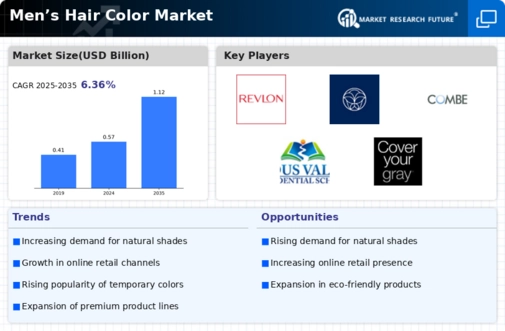
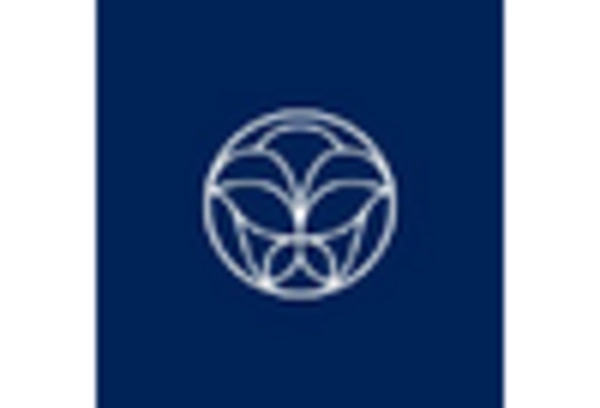
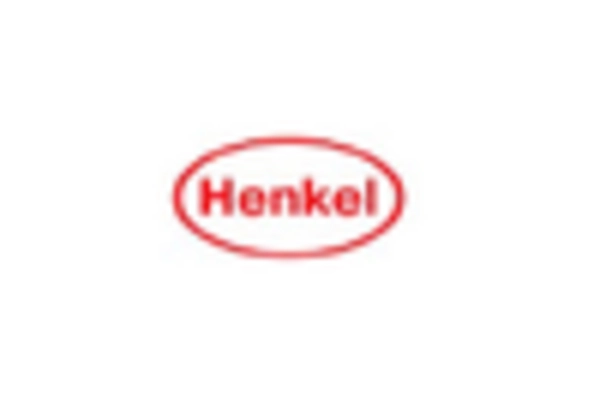
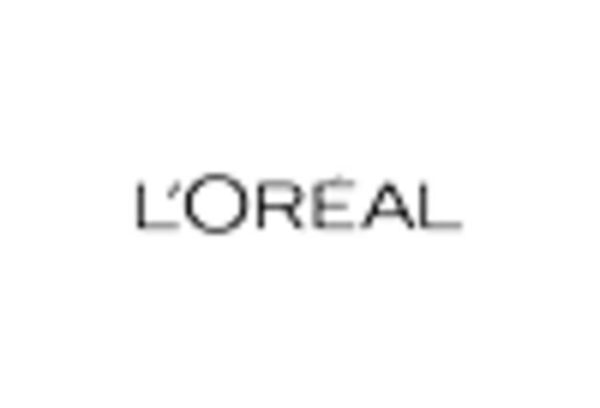
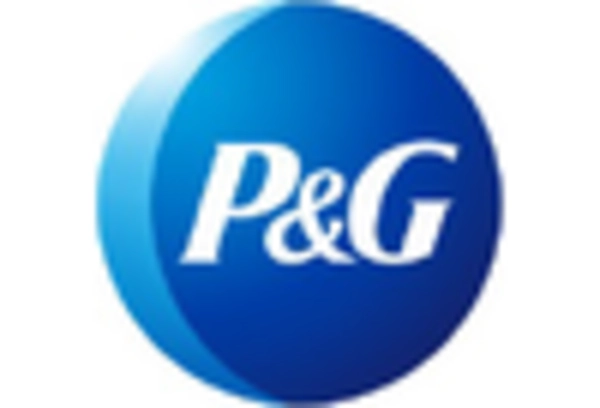
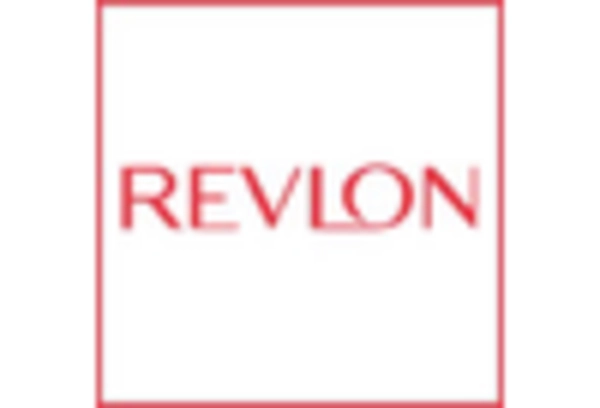
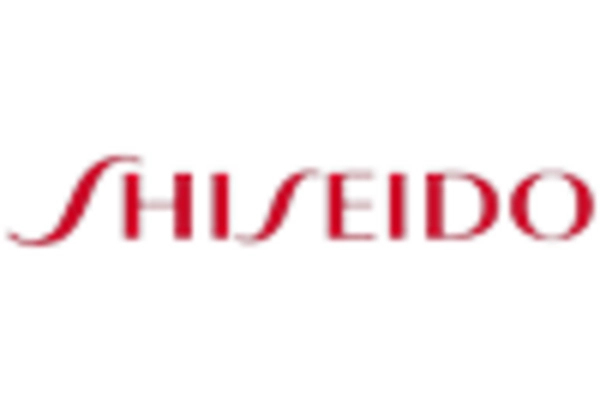









Leave a Comment